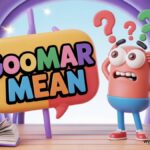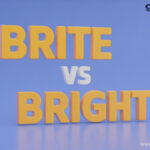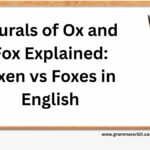Are you writing an email and you stop for a moment to think: Is that product called Brite vs Bright? You see a sign for a Brite Nite festival and you think, is that a mistake? Well, you are not alone. The difference between brite and bright is one of the most commonly encountered spelling conundrums, not because it is that hard, but because we see the two versions so often.
To finally clear this up, is brite a word, and how do you use bright correctly? The answer is more complex than just a matter of answering a few grammar questions, it is truly a matter of how diverse a language is, and how it flows and changes from works of literature to modern day consumer products.
The Main Attraction: Unpacking the Versatile Power of “Bright”
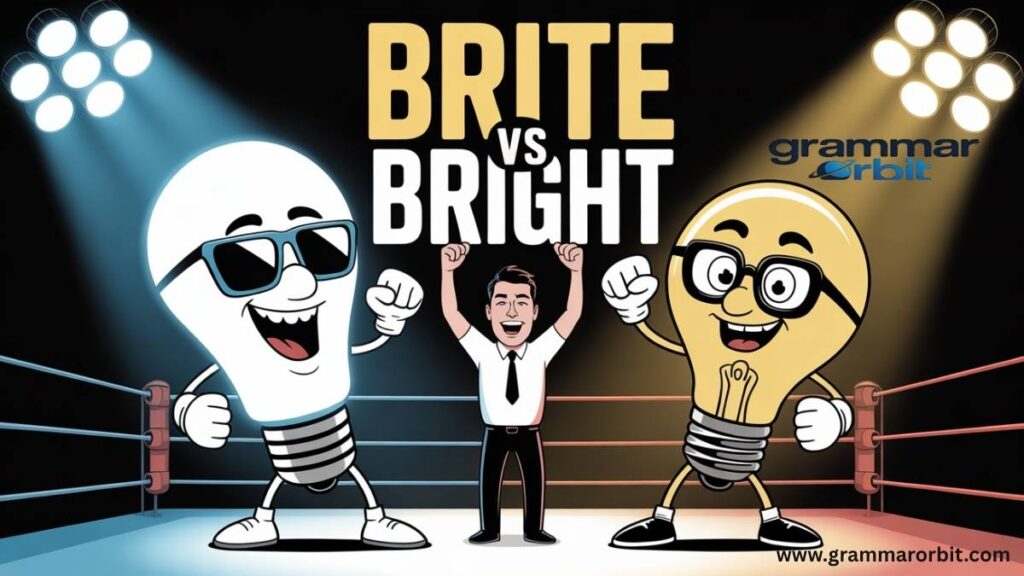
Bright is a workhorse of the English language. Its meaning is rich and multifaceted, stretching far beyond just a description of light. Understanding its full scope is the first step to mastering its use.
What Does Bright Truly Mean?
The definition of bright is deceptively simple. At its core, it describes something that emits or reflects a lot of light. But that’s just the beginning. Its meaning expands into color, intellect, and even emotion.
Let’s break down the key dimensions of this powerful word:
- Literal and Visual Brightness: This is the most straightforward use. It refers to anything that is shining strongly or is filled with light.
- Example: The bright sun made them squint.
- Example: They installed bright LED bulbs in the kitchen.
- Vividness in Color: When we talk about colors, bright is the opposite of dull or muted. It describes intense, saturated, and eye-catching hues.
- Example: She wore a bright yellow raincoat on the gloomy day.
- Example: The artist used bright reds and blues to create a feeling of joy.
- Intelligence and Quickness of Mind: Calling someone bright is a wonderful compliment. It suggests they are intelligent, quick-witted, and able to grasp concepts easily. A bright idea is a clever, innovative one.
- Example: He was a bright student who excelled in mathematics.
- Example: She had the bright idea to start the meeting with a fun icebreaker.
- Positive and Hopeful Outlook: This usage taps into the emotional resonance of the word. A bright future is a promising one. A person with a bright personality is cheerful and optimistic.
- Example: Despite the challenges, the company’s future looks bright.
- Example: His bright smile could light up a room.
A Quick Guide to Bright Synonyms
| Context | Synonyms |
|---|---|
| Light | Shining, brilliant, radiant, luminous |
| Color | Vivid, vibrant, intense, bold |
| Intelligence | Smart, clever, brilliant, sharp |
| Outlook | Promising, hopeful, cheerful, sunny |
As you can see, bright is a true linguistic champion. It’s the correct, formal, and universally understood spelling you should use in all serious communication, from academic writing to professional emails.
KM Meaning in Text: A Comprehensive Guide
The Specialist: Where “Brite” Actually Fits In
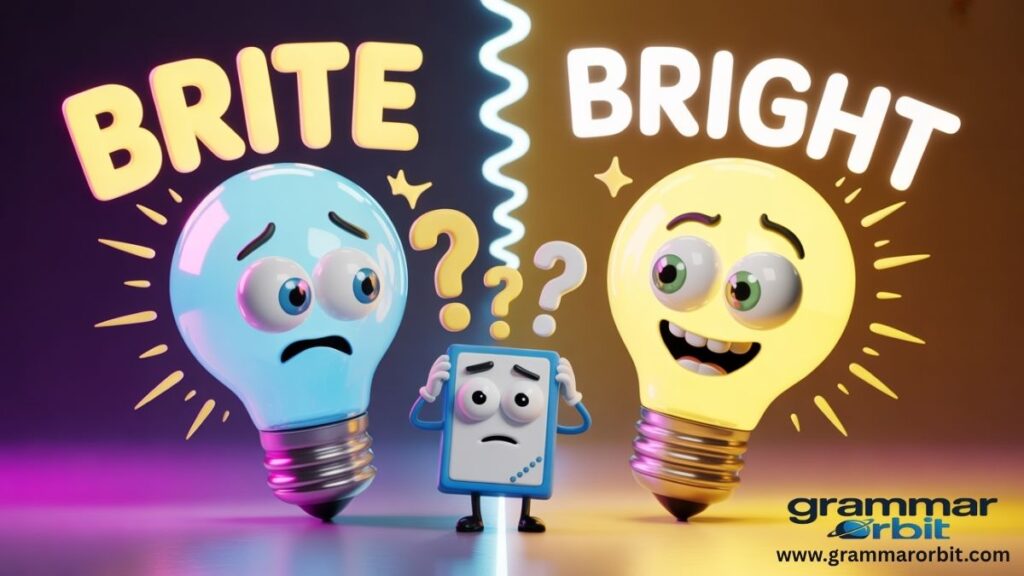
Now, let’s tackle the elephant in the room: Is brite a word?
The answer is a fascinating “yes, but…” In the dictionary you use for formal writing, you won’t find an entry for brite. It is not a standard English word. If you used it in an essay or a report, it would be marked as a spelling mistake.
So, why does it exist? And why do we see it so often?
Brite is a stylized spelling a deliberate alteration used for a specific effect. Its power lies not in its grammatical correctness, but in its marketing appeal and informal coolness.
How to Use Brite (And When to Avoid It)
Think of brite as a specialized tool. You wouldn’t use a power drill to hammer in a tiny nail. Similarly, you should only pull out brite for very specific jobs.
Effective Uses of “Brite”:
- Brand Names and Trademarks: This is its primary home. Companies choose brite because it’s short, catchy, and easy to trademark. The standard spelling “bright” is too common to claim, but brite is unique and ownable.
- Example: Crest Whitestrips uses this stylized spelling for its brand identity.
- Example: You might see a local bar called “Brite Nites” or a product called “BriteLite.”
- Informal and Stylistic Writing: In text messages, social media captions, or trendy advertising, brite can convey a sense of casual, edgy, or modern energy.
- Example: “Thx 4 coming out 2nite! Had a brite time! ✨”
When to Absolutely Avoid “Brite”:
- All Formal Writing: This includes school essays, business reports, legal documents, and professional correspondence. Using it here will make you look careless.
- Any Context Where Clarity is Key: If you’re not trying to be trendy or brand-specific, always use bright. It is the universally clear and correct choice.
Case Study: The Toy That Lit Up a Spelling
No discussion of brite vs bright is complete without talking about Lite-Brite. This classic toy, originally developed by Hasbro, is a perfect case study in stylized spelling.
The name Lite-Brite is a masterclass in marketing:
- “Lite” is another common stylized spelling, suggesting something is fun, easy, and less heavy.
- “Brite” completes the name, telling you exactly what the toy does: it makes bright lights.
Together, Lite-Brite is far more memorable and trademark-friendly than “Light Bright.” The name itself is a piece of the product’s identity, teaching generations of children that sometimes, breaking the grammar rules can be a lot of fun (and very profitable).
Side-by-Side: Your Quick-Reference Cheat Sheet
Still feeling unsure? This simple table lays out the core difference between brite and bright at a glance.
| Feature | Bright | Brite |
|---|---|---|
| Status | Standard English Word | Stylized / Trademark Spelling |
| Usage | Universal: light, color, intelligence, future | Niche: brand names, marketing, slang |
| Formality | Correct in all formal and informal contexts | Incorrect in formal writing |
| Pronunciation | /braɪt/ | /braɪt/ (identical) |
| Example | “She has a bright future ahead of her.” | “I loved creating designs on my Lite-Brite.” |
Putting It Into Practice: How to Use Bright in a Sentence
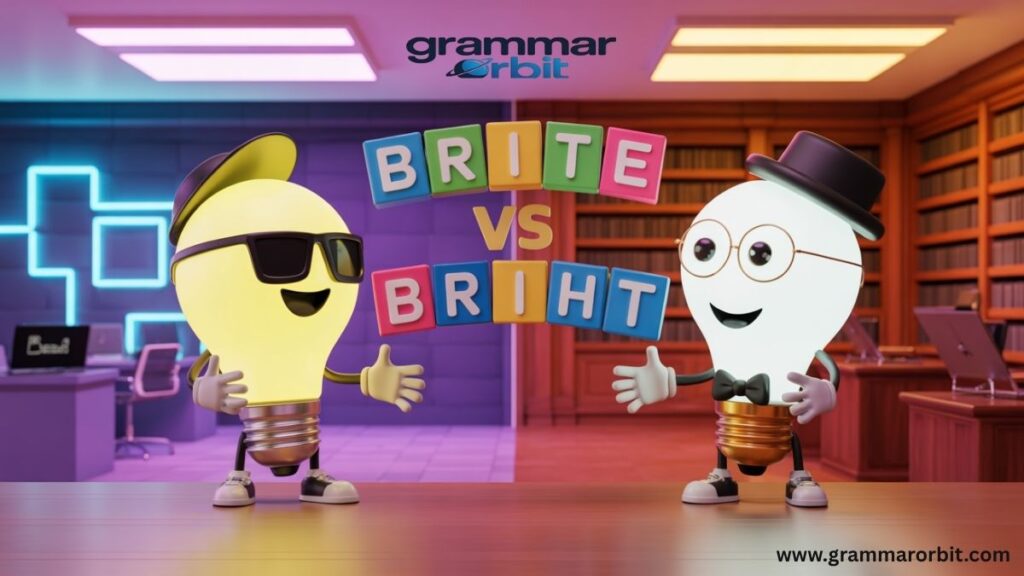
The best way to cement your understanding is to see the correct usage in action. Here are several examples of bright in a sentence, showcasing its versatility.
- The bright morning light streamed through the window. (Visual Light)
- We need to find a bright solution to this complex problem. (Intelligence)
- His bright blue eyes were full of excitement. (Vivid Color)
- The team remains bright and motivated despite the project’s difficulties. (Positive Outlook)
- “The bright stars of the universe are a constant source of wonder for astronomers.” (Scientific Context)
Notice how in every single one of these correct, formal sentences, the only possible spelling is bright.
WRD Meaning in Text: A Complete Guide
A Quick Dip into History: The Etymology of Bright

Where did this versatile word come from? The bright etymology is a long and shining one. It descends directly from the Old English word beorht, which meant… you guessed it, “bright” or “shining.” This word itself has ancient Germanic roots, connecting it to words in other languages like the Old High German beraht.
This historical depth is another reason bright is the standard spelling. It’s the form that has been passed down, evolved, and solidified over more than a thousand years of use. Brite, by contrast, is a very recent invention, born from the needs of modern commerce.
Your Unbeatable Strategy for Perfect Spelling
Let’s end the confusion for good. Here is a simple, foolproof rule to live by.
The Golden Rule of Brite vs Bright:
Use “bright” 99% of the time. Reserve “brite” only when you are specifically referring to a brand name or intentionally crafting a casual, trendy vibe.
If you’re ever in doubt, always default to bright. You will never be wrong.
Memory Trick: Think of the ‘gh’ in bright as the light you need to see correctly. “You need the ‘gh’ to see the light.” This simple mental link can save you from a common spelling mistake.
Plurals of Ox and Fox Explained: Oxen vs Foxes in English
Let’s Recap Brite vs Bright

The journey of brite vs bright is a perfect example of how language is both rigid and flexible. We have clear, important rules for correct spelling, but we also have creative spaces where those rules can be bent for effect.
- Bright is the undisputed champion of formal and informal English. It’s the word you use to describe light, brilliant minds, vivid colors, and hopeful futures.
- Brite is the niche player. It’s a powerful tool in marketing and informal slang, but it has no place in academic writing or professional communication.
Now that you understand the history, the rules, and the exceptions, you can wield these words with confidence. Use bright to write clearly and correctly, and appreciate the clever strategy behind every brite you encounter on a store shelf. You’re now equipped to not just know the difference, but to understand it.
Reference: Cambridge Dictionary Definitions
Here’s a trusted source for clear word meanings:
FAQs
What is another word for brite?
Since “brite” isn’t a standard word, it doesn’t have direct synonyms. It’s a stylized spelling of bright, whose synonyms include shining brilliant vivid intelligent, and cheerful, depending on the context.
How do Americans spell bright?
In American English, the correct and universal spelling is B-R-I-G-H-T. This is the only spelling used in formal writing, education, and standard communication.
What does Brite mean?
“Brite” is not a word you’ll find in the dictionary. It is an informal, stylized spelling used primarily in brand names (like Crest Whitestrips) and marketing to create a catchy, trademarkable name. It is not correct for formal writing.
What do you mean by bright?
Bright is a versatile word with several key meanings:
- Full of Light: Emitting or reflecting a lot of light (e.g., a bright sun).
- Vivid Color: Intense and not dull (e.g., a bright red car).
- Intelligent: Quick-witted and smart (e.g., a bright student).
- Hopeful: Cheerful and promising (e.g., a bright future).
What is the main difference between brite and bright?
The core difference is that bright is the correct English word for all contexts, while brite is an incorrect spelling used deliberately for branding and informal style. You should always use “bright” unless you are specifically referring to a product name.
The Final Verdict
So, there you have it. The great Brite vs Bright showdown ends not with a bang, but with a correctly spelled whimper.
Think of bright as the reliable, multi talented friend who’s always grammatically correct. They can light up a room, describe your genius ideas, and promise you a hopeful future. They’re the one you take home to meet your English teacher.
Brite, on the other hand, is that friend’s flashy, slightly rebellious cousin who only shows up to sell you something. They’re fun on a product box or a neon sign, but you’d never trust them with your resume.
Let’s make a pact: in the wild world of words, let’s agree to keep our futures bright, our ideas bright, and our spelling even brighter. Leave brite to the marketers and the classic toys. Your writing will be all the more brilliant for it.
JHON AJS is an experienced blogger and the creative voice behind the website grammarorbit.com, namely Grammar Orbit. With a keen eye for language and a passion for wordplay, he creates engaging grammar insights, word meanings, and clever content that make learning English enjoyable and interesting for readers.




